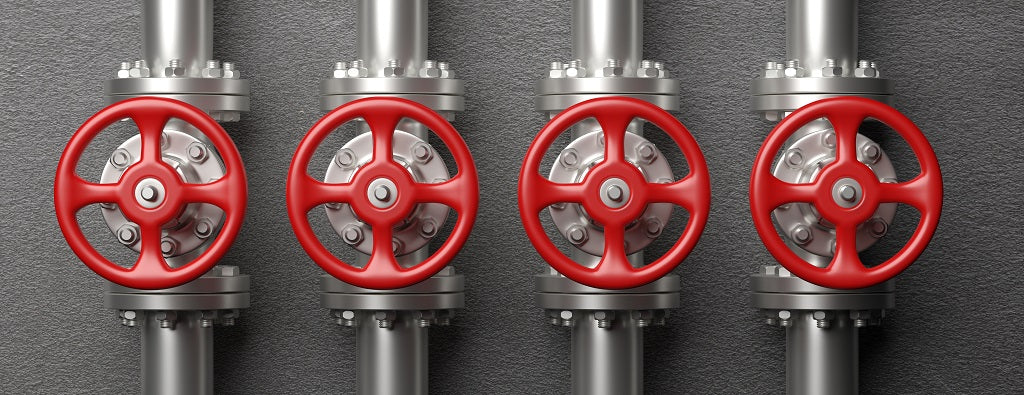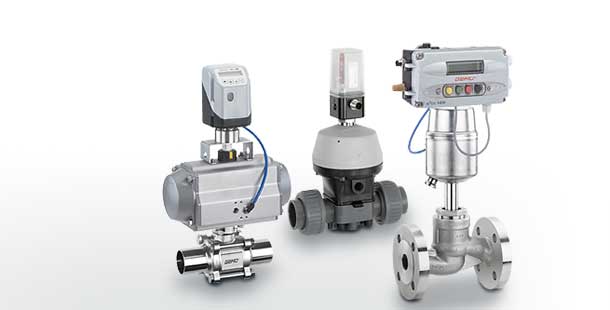Enhancing System Control with High-Performance Control Valves
Enhancing System Control with High-Performance Control Valves
Blog Article
Achieve Seamless Integration and Control With Top Quality Structure Automation Controls
In the world of contemporary structure monitoring, the value of high quality structure automation controls can not be overstated. As innovation remains to development, the combination and control of numerous systems within a structure have actually developed to be more effective and innovative. The seamless procedure and tracking of lights, COOLING AND HEATING, protection, and other structure features have actually come to be vital for enhancing resident convenience, power effectiveness, and total operational performance. The journey towards achieving true assimilation and control is a diverse one, with considerations varying from system compatibility to cybersecurity. Welcoming high quality building automation controls is not simply a matter of comfort yet a critical essential for companies aiming to maximize their facilities' performance and sustainability.

Evolution of Building Automation Controls
Throughout the past few decades, the evolution of developing automation controls has substantially transformed the way buildings are managed and run. Constructing automation systems largely focused on basic functions such as managing heating, air flow, and air conditioning (A/C) systems. As innovation progressed, these controls have actually come to be more advanced, enabling for a bigger variety of structure systems to be integrated and handled centrally.
The advancement of constructing automation controls has seen a shift towards even more smart systems that can adapt to transforming problems in real-time. This versatility is vital for optimizing power efficiency and making certain passenger convenience. Additionally, modern-day structure automation controls currently provide features such as predictive upkeep, remote surveillance, and data analytics, allowing center managers to make data-driven choices to enhance building performance.

Benefits of Top Quality Assimilation
The advancement in building automation controls towards more smart systems has underscored the substantial benefits of top quality assimilation in enhancing structure operations and improving total performance. Quality assimilation of constructing automation controls provides numerous vital advantages. It leads to enhanced energy efficiency by allowing various systems to function with each other seamlessly, making sure optimal efficiency and decreasing power wastage. High quality integration improves resident comfort and performance by enabling customized control over environmental settings like air, lights, and temperature level high quality. This modification can bring about a more favorable and comfy working or living atmosphere. Additionally, high quality integration streamlines upkeep and fixing procedures, as all systems are interconnected and can be monitored and managed from a centralized interface. This central control likewise gives better presence and insights into structure efficiency, allowing aggressive maintenance and optimization approaches. Overall, the advantages of high quality integration in structure automation controls are obvious, using boosted effectiveness, comfort, and functional efficiency.
Boosted Customer Experience and Accessibility
Enhancing user interaction with building automation manages via instinctive layout and enhanced access raises the total experience for owners and center supervisors alike. here are the findings By concentrating on user experience, building automation systems can come to be extra effective and easy to use. Intuitive user interfaces, clear navigating, and personalized settings equip individuals to communicate with the controls quickly and successfully.
Availability functions play an essential role in making sure that all people, including those with disabilities, can use the structure automation regulates easily. Including functions such as voice commands, responsive switches, and color-contrasted displays can boost access and make the controls much more inclusive.
Furthermore, boosted individual experience brings about higher user satisfaction, increased productivity, and better decision-making. Residents can change ecological setups according to their preferences, while facility managers can successfully check and handle structure systems - control valves. In general, focusing on individual experience and availability in building automation regulates contributes to an extra effective and seamless structure environment for all stakeholders included
Lasting Practices Through Automation

In addition, automation can promote the assimilation of renewable energy sources such as solar panels or wind turbines into building operations. Through automation, buildings can align with contemporary sustainability goals and contribute to a greener future.
Future Trends in Building Control Solution
In expectancy of progressing innovations and progressing sustainability techniques, the trajectory of structure control systems is poised to embrace innovative solutions and transformative approaches. One popular trend shaping the future of structure control systems is the boosted combination of Expert system (AI) and artificial intelligence. These technologies allow structures to adjust in real-time to altering problems, enhancing power consumption and boosting convenience for occupants. Additionally, the Internet of Points (IoT) is changing structure control systems by attaching tools and sensing units to browse around here enhance and simplify procedures performance.
Another vital trend is the emphasis on cybersecurity actions to secure against potential dangers to constructing automation systems. As buildings end up being a lot more interconnected, making certain robust cybersecurity procedures will certainly be necessary to protect delicate information and protect against unauthorized gain access to.
In addition, the shift in the direction of cloud-based systems is acquiring energy, enabling centralized control and remote access to building systems. This promotes much easier monitoring, upkeep, and updates, improving the total efficiency and versatility of structure control systems. As technology remains to advance, these patterns are expected to shape the future landscape of structure automation controls, driving advancement and sustainability in the developed setting.
Verdict
Future fads in building control systems are most likely to concentrate on further enhancing automation capabilities for boosted power performance and total efficiency. It is important for building owners and drivers to prioritize the adoption of quality structure automation regulates to optimize structure procedures and achieve lasting sustainability objectives.
In the realm of modern-day building management, the significance of top quality building automation controls can not be overstated. Overall, the evolution of structure automation manages continues to drive innovation in the structure administration industry, supplying brand-new opportunities for developing smarter and extra lasting structures.
The advancement in structure automation manages in the direction of more intelligent systems has highlighted the substantial benefits of quality assimilation in optimizing building procedures and boosting general performance. In general, focusing on user experience and ease of access in structure automation controls contributes to a much more smooth and productive structure setting for all stakeholders involved.
It is necessary for structure owners and operators to focus on the adoption of quality structure automation regulates to optimize building operations and attain long-term sustainability objectives. - control valves
Report this page